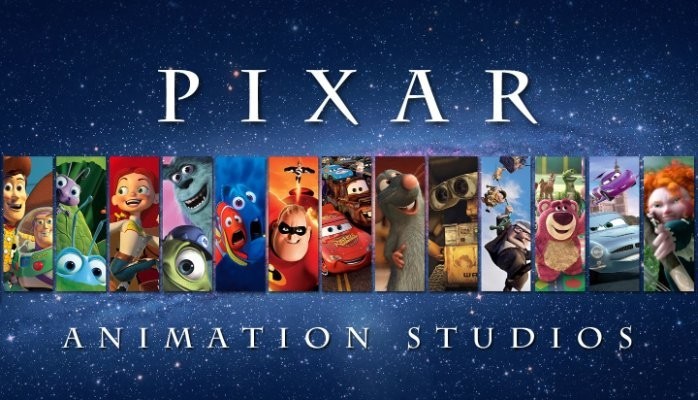
I’ve shared this before, but it’s been nearly 15 years since I published this concept, and I’ve recently been asked how I distill down to core messaging, and support of all of outbound messaging and internal sales enablement for all the companies I’ve worked for as CPO and CMO. I hope you find this valuable.
The first order of business is always to speak to as many customers, prospects, partners, analysts, industry experts, and speak to all of the employees to get their perspectives of what they think makes your company different and great. Combine that with the trends, state of the market, and if you have competition, what is the posture they have assumed.
Next is the exercise that any company can do which I’m sharing below.
15 years ago I adapted a set of 22 rules originally revealed by Emma Coats Pixar’s former Story Artist, that they used to develop every movie at Pixar. When I first saw it, it dawned on me how they were able to produce incredible hit after hit, allowing their characters to find their way into our hearts, minds and wallets.
Those who have worked with me in the past know that I have a penchant for using emotional movie or TV theme based music and video in events, presentations and messaging. I believe that good marketing connects with its audience, much the way a feature film such as Pixar’s Toy Story or UP does. So ever since then, when I set about developing the product and solution marketing messages for the companies I’ve worked for, I have used the 22 rules listed by Emma (her full original rules follow at the end). I’ve listed how I’ve adapted them to form the core messaging and ongoing product strategy and marketing touchstone for companies I’ve worked at. Specific edits in bold and CAPS below:
22 Rules you can use for your Product Strategy, Messaging, Tagline, Story & Ongoing Marketing Efforts
- You admire THE RESULTING BENEFITS & VALUE OF YOUR PRODUCT more than for the FEATURES.
- You gotta keep in mind what’s interesting to THEM as a BUYER, not what’s fun to do as a MARKETER. They can be very different.
- Trying for TAGLINE is important, but you won’t see HOW YOUR PRODUCT TRULY DIFFERENTIATES til you’re at the end of YOUR VALIDATED MESSAGING PROCESS. Now rewrite.
- Use this as the Elevator framework for you and your buyer: Once upon a time there was A <insert department specific> ORGANIZATION WITHIN A <insert industry if appropriate> COMPANY. Every day, THEY STRUGGLED WITH A COMPETITIVE MARKETPLACE, COMPLEX CUSTOMERS, AND INCREASINGLY STRINGENT REGULATIONS. One day THEY DISCOVERED <your product or platform>. Because of that, THEY WERE ABLE TO EXECUTE BETTER THROUGH <insert your best resulting actions>. Because of that, THEIR IT TEAMS <or whomever your buyer is> WERE CELEBRATED FOR <business value prop>, THEIR BUSINESS TEAMS WERE COMMENDED FOR INCREASED PRODUCTIVITY AND EFFECTIVENESS … ALL WHILE STAYING COMPLIANT. Until finally THEY DEMONSTRATED SUCH COMPELLING BUSINESS VALUE THAT THE REST OF THE COMPANY JOINED THEM AND ALSO BEGAN USING <insert your product or platform>
- Simplify. Focus. Combine AND GROUP MESSAGES. Hop over detours. You’ll feel like you’re losing valuable stuff but it sets you free.
- What is your PRODUCT good at, comfortable with? Throw the polar opposite at them. Challenge them. How do they deal? IF THEY DON’T DEAL WELL ON PAPER, DON’T PUT YOUR SALES TEAMS INTO NON-WINNABLE SITUATIONS BY INCLUDING THOSE USE CASES JUST TO INCREASE MARKET OPPORTUNITY
- Come up with your ending before you figure out your middle. Seriously. Endings are hard, get yours working up front. CAN YOU DISTILL YOUR CORE PRODUCT MESSAGE DOWN TO THREE KEYWORDS OR LESS?
- Finish your MESSAGING, let go even if it’s not perfect. In an ideal world you have both, but move on. Do better next time. HOME RUN WILL OCCUR ONLY WHEN IT RESONATES WITH AUDIENCES.
- When you’re stuck, make a list of WHY SOMEONE WILL NOT BUY YOUR PRODUCT. Lots of times the material to get you unstuck will show up.
- Pull apart the MESSAGES FROM SUCCESSFUL PRODUCTS/COMPANIES you like. What you like in them COULD BE APPLIED WITH A FEW TWEAKS TO YOUR TARGET MARKET; you’ve got to recognize it before you can use it.
- Putting it on paper lets you start fixing it. If it stays in your head, a perfect idea, you’ll never share it with anyone. COLLABORATE AND MARKET TEST.
- Discount the 1st PRODUCT FEATURE that comes to mind. And the 2nd, 3rd, 4th, 5th – get the obvious out of the way. Surprise yourself. FIND DIFFERENTIATION BEYOND PRODUCT FEATURES.
- Give your PROSPECTS AGGRESSIVE OPINIONS. Passive/malleable Q&A might seem likable to you as you write, but it’s poison to the SALES PERSON WHO WILL BE HIT WITH THE TOUGH QUESTIONS.
- Why must you SELL THIS PRODUCT? What’s the belief burning within YOUR COMPANY that your SALES TEAMS feeds off? That’s the heart of it.
- If you were your CUSTOMER, in this situation, how would you feel? Honesty BACKED UP BY REFERENCES AND PROOF POINTS lends credibility to unbelievable METRICS AND OUTRAGEOUS CLAIMS.
- What are the stakes? Give YOUR PROSPECT A REASON TO ROOT FOR YOUR PRODUCT. What happens if they don’t BUY? Stack the odds against.
- No work is ever wasted. If it’s not working, let go and move on – it’ll come back around to be useful later. WITH TECHNOLOGY AND MARKETING MESSAGES, WHAT’S OLD IS NEW AGAIN (Examples: Mainframes to Client-Server to Server-Based Computing to On Premise Appliances to Cloud)
- You have to know yourself: the difference between doing your best & fussing. MESSAGING is testing, not refining. YOUR BEST MESSAGE IS NOT WHAT YOU OR YOUR COMPANY THINKS IT IS. IT’S WHAT YOUR CUSTOMER AND BUYERS TELL YOU IT IS.
- FACT-BASED COMPETITIVE JABS to get YOUR COMPETITION into trouble are great; USING RUMORS AND INACCURACIES is cheating.
- Exercise: take the building blocks of THE CURRENT MESSAGE OR YOUR COMPETITION’S MESSAGES YOU DON’T LIKE. How do you rearrange them into what you DO like?
- You gotta identify with your PROSPECT, can’t just CREATE ‘cool’ MESSAGES. What would make THEM BUY?
- What’s the essence of your MESSAGE? Most economical telling of it? DISTILL IT DOWN TO A FEW KEYWORDS. If you know that, you can build out from there.
Now take a look at The Original Pixar’s 22 Rules of Storytelling. Again thank you to Emma Coats for her inspiration
- You admire a character for trying more than for their successes.
- You gotta keep in mind what’s interesting to you as an audience, not what’s fun to do as a writer. They can be very different.
- Trying for theme is important, but you won’t see what the story is actually about til you’re at the end of it. Now rewrite.
- Once upon a time there was ___. Every day, ___. One day ___. Because of that, ___. Because of that, ___. Until finally ___.
- Simplify. Focus. Combine characters. Hop over detours. You’ll feel like you’re losing valuable stuff but it sets you free.
- What is your character good at, comfortable with? Throw the polar opposite at them. Challenge them. How do they deal?
- Come up with your ending before you figure out your middle. Seriously. Endings are hard, get yours working up front.
- Finish your story, let go even if it’s not perfect. In an ideal world you have both, but move on. Do better next time.
- When you’re stuck, make a list of what WOULDN’T happen next. Lots of times the material to get you unstuck will show up.
- Pull apart the stories you like. What you like in them is a part of you; you’ve got to recognize it before you can use it.
- Putting it on paper lets you start fixing it. If it stays in your head, a perfect idea, you’ll never share it with anyone.
- Discount the 1st thing that comes to mind. And the 2nd, 3rd, 4th, 5th – get the obvious out of the way. Surprise yourself.
- Give your characters opinions. Passive/malleable might seem likable to you as you write, but it’s poison to the audience.
- Why must you tell THIS story? What’s the belief burning within you that your story feeds off of? That’s the heart of it.
- If you were your character, in this situation, how would you feel? Honesty lends credibility to unbelievable situations.
- What are the stakes? Give us reason to root for the character. What happens if they don’t succeed? Stack the odds against.
- No work is ever wasted. If it’s not working, let go and move on – it’ll come back around to be useful later.
- You have to know yourself: the difference between doing your best & fussing. Story is testing, not refining.
- Coincidences to get characters into trouble are great; coincidences to get them out of it are cheating.
- Exercise: take the building blocks of a movie you dislike. How d’you rearrange them into what you DO like?
- You gotta identify with your situation/characters, can’t just write ‘cool’. What would make YOU act that way?
- What’s the essence of your story? Most economical telling of it? If you know that, you can build out from there.
